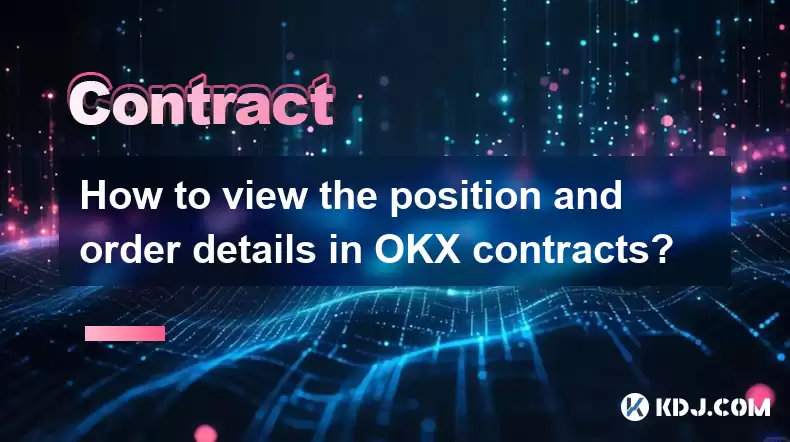-
 Bitcoin
Bitcoin $116700
0.24% -
 Ethereum
Ethereum $3973
4.34% -
 XRP
XRP $3.283
7.68% -
 Tether USDt
Tether USDt $1.000
0.01% -
 BNB
BNB $789.8
2.27% -
 Solana
Solana $176.2
3.31% -
 USDC
USDC $0.9999
0.00% -
 Dogecoin
Dogecoin $0.2238
5.14% -
 TRON
TRON $0.3389
-0.51% -
 Cardano
Cardano $0.7907
4.03% -
 Stellar
Stellar $0.4527
10.02% -
 Hyperliquid
Hyperliquid $41.07
4.27% -
 Sui
Sui $3.794
1.77% -
 Chainlink
Chainlink $19.49
10.40% -
 Bitcoin Cash
Bitcoin Cash $580.9
0.74% -
 Hedera
Hedera $0.2617
4.32% -
 Avalanche
Avalanche $23.41
3.67% -
 Ethena USDe
Ethena USDe $1.001
-0.03% -
 Litecoin
Litecoin $122.4
1.38% -
 Toncoin
Toncoin $3.364
1.49% -
 UNUS SED LEO
UNUS SED LEO $8.988
0.37% -
 Shiba Inu
Shiba Inu $0.00001295
2.82% -
 Uniswap
Uniswap $10.62
5.75% -
 Polkadot
Polkadot $3.922
4.46% -
 Dai
Dai $1.000
0.01% -
 Bitget Token
Bitget Token $4.494
2.15% -
 Monero
Monero $268.0
-1.30% -
 Cronos
Cronos $0.1523
3.68% -
 Pepe
Pepe $0.00001127
4.43% -
 Aave
Aave $285.4
4.85%
How to view the position and order details in OKX contracts?
OKX's "Contracts" section displays positions, orders, and history. Different tabs offer varying detail levels, including unrealized P/L, enabling efficient order and position management via filters and charting tools.
Mar 24, 2025 at 07:00 am

Key Points:
- Accessing your OKX contract positions requires navigating to the "Contracts" section of the platform.
- Order details, including filled and unfilled orders, are readily available within the same interface.
- Different views (e.g., "Positions," "Orders," "History") provide varying levels of detail.
- Understanding the different tabs and filters within the OKX platform is crucial for efficient position and order management.
- The platform offers various tools to help you analyze your positions and orders effectively.
How to View the Position and Order Details in OKX Contracts?
OKX, a prominent cryptocurrency exchange, provides robust tools for managing contracts trading. Understanding how to effectively view your positions and order details is crucial for successful trading. This guide will walk you through the process.
First, you need to log in to your OKX account. Once logged in, you'll find the "Contracts" section prominently displayed on the main dashboard. This section is your central hub for all contract-related activities. Clicking on it will open a new page dedicated to your contract positions and order management.
Within the "Contracts" section, you'll encounter several tabs or views. The most important are the "Positions," "Orders," and "History" tabs. The "Positions" tab displays your currently open positions, showing the contract, quantity, entry price, unrealized P/L (profit or loss), and margin used. Each position provides a detailed breakdown, allowing for easy monitoring of your active trades.
The "Orders" tab showcases your pending and unfilled orders. This view is crucial for managing your active trading strategies. You can see the order type (limit, market, etc.), quantity, price, and status (pending, filled, cancelled). This allows you to track orders and make adjustments as needed.
The "History" tab provides a comprehensive record of your past trading activity. This includes both filled and cancelled orders, providing a complete audit trail of your contract trading history. You can filter this history by date, contract, and other parameters to easily find specific trades.
To view detailed information for a specific position or order, simply click on the respective entry. This will open a pop-up window or a new page showing all the relevant details, such as timestamps, fees, and any other relevant information about that particular trade.
Navigating the OKX contract interface effectively requires understanding the available filters. These filters allow you to refine your view of positions and orders, focusing on specific contracts, time periods, or order types. This is particularly useful when managing a large number of concurrent positions or orders.
The platform also incorporates charting tools that allow you to visualize your position changes over time. These charts often integrate directly with your position data, providing a visual representation of your P/L and other key metrics. This visual aid can significantly improve your understanding of your trading performance.
Furthermore, OKX provides advanced features like the ability to export your trading history. This functionality enables you to download your transaction data for record-keeping, tax purposes, or for use in external analysis tools. The export options usually include various formats like CSV, making data integration straightforward.
How to understand the information displayed in OKX contract positions?
The OKX contract positions display shows crucial data points like contract symbol (e.g., BTC-USD), position size (number of contracts), average entry price, current market price, unrealized P/L (profit or loss), margin used, and liquidation price. Understanding these details is crucial for risk management.
How can I cancel an order in OKX contracts?
Locate the order in the "Orders" tab. Click on the order to view its details. You'll usually find a "Cancel" or "Close" button associated with each order. Clicking this button will send a cancellation request to the exchange.
What does unrealized P/L mean in OKX contracts?
Unrealized P/L represents the profit or loss you would incur if you closed your position at the current market price. It's not a realized profit until you actually close the position.
How do I find my trading history in OKX contracts?
Your trading history is accessible via the "History" tab within the "Contracts" section. This tab provides a detailed record of your past trades, including filled and cancelled orders. You can filter by date, contract, and other criteria.
What are the different order types available in OKX contracts?
OKX supports various order types, including market orders (immediate execution at the current market price), limit orders (execution at a specified price or better), and stop orders (triggered when the price reaches a specific level). Understanding these different order types is key to implementing your trading strategies effectively.
How do I manage my margin in OKX contracts?
OKX allows you to manage your margin by adjusting your leverage and adding or withdrawing funds from your margin account. Careful margin management is crucial to avoid liquidation. The platform usually provides clear indications of your margin usage and the risk of liquidation.
What is the liquidation price in OKX contracts?
The liquidation price is the price at which your position will be automatically closed by the exchange due to insufficient margin. Understanding your liquidation price is critical for risk management in leveraged trading.
Disclaimer:info@kdj.com
The information provided is not trading advice. kdj.com does not assume any responsibility for any investments made based on the information provided in this article. Cryptocurrencies are highly volatile and it is highly recommended that you invest with caution after thorough research!
If you believe that the content used on this website infringes your copyright, please contact us immediately (info@kdj.com) and we will delete it promptly.
- Coinbase, Cosmos, and dYdX: Navigating the Crypto Currents
- 2025-08-09 06:30:16
- BNB Price, Altcoins, and Predictions: What's the Buzz?
- 2025-08-09 06:30:16
- Crypto Presale Projects Primed for Gains in 2025: A New Yorker's Take
- 2025-08-09 06:50:15
- Ruvi AI: The Millionaire Maker Poised for a Price Spike?
- 2025-08-09 06:50:15
- Cold Wallet, CoinMarketCap, Cardano & XRP: Navigating Crypto's Next Big Wave
- 2025-08-09 07:10:15
- Hedera (HBAR) Price Surge: Market Cap Soars, What's Next?
- 2025-08-09 07:10:15
Related knowledge

What is the difference between realized and unrealized PNL on KuCoin?
Aug 09,2025 at 01:49am
Understanding Realized and Unrealized PNL on KuCoinWhen trading on KuCoin, especially in futures and perpetual contracts, understanding the distinctio...

How does KuCoin Futures compare against Binance Futures in terms of features?
Aug 09,2025 at 03:22am
Trading Interface and User ExperienceThe trading interface is a critical component when comparing KuCoin Futures and Binance Futures, as it directly i...

What is the distinction between mark price and last price on KuCoin?
Aug 08,2025 at 01:58pm
Understanding the Basics of Price in Cryptocurrency TradingIn cryptocurrency exchanges like KuCoin, two key price indicators frequently appear on trad...

What are the specific maker and taker fees on KuCoin Futures?
Aug 08,2025 at 08:28am
Understanding Maker and Taker Fees on KuCoin FuturesWhen trading on KuCoin Futures, users encounter two primary types of fees: maker fees and taker fe...

Can you explain the difference between cross margin and isolated margin on KuCoin?
Aug 09,2025 at 02:57am
Understanding Margin Trading on KuCoinMargin trading on KuCoin allows traders to borrow funds to increase their trading position beyond their actual c...

How can I open a long position on KuCoin Futures?
Aug 09,2025 at 02:07am
Understanding KuCoin Futures and Long PositionsOpening a long position on KuCoin Futures means you are speculating that the price of a cryptocurrency ...

What is the difference between realized and unrealized PNL on KuCoin?
Aug 09,2025 at 01:49am
Understanding Realized and Unrealized PNL on KuCoinWhen trading on KuCoin, especially in futures and perpetual contracts, understanding the distinctio...

How does KuCoin Futures compare against Binance Futures in terms of features?
Aug 09,2025 at 03:22am
Trading Interface and User ExperienceThe trading interface is a critical component when comparing KuCoin Futures and Binance Futures, as it directly i...

What is the distinction between mark price and last price on KuCoin?
Aug 08,2025 at 01:58pm
Understanding the Basics of Price in Cryptocurrency TradingIn cryptocurrency exchanges like KuCoin, two key price indicators frequently appear on trad...

What are the specific maker and taker fees on KuCoin Futures?
Aug 08,2025 at 08:28am
Understanding Maker and Taker Fees on KuCoin FuturesWhen trading on KuCoin Futures, users encounter two primary types of fees: maker fees and taker fe...

Can you explain the difference between cross margin and isolated margin on KuCoin?
Aug 09,2025 at 02:57am
Understanding Margin Trading on KuCoinMargin trading on KuCoin allows traders to borrow funds to increase their trading position beyond their actual c...

How can I open a long position on KuCoin Futures?
Aug 09,2025 at 02:07am
Understanding KuCoin Futures and Long PositionsOpening a long position on KuCoin Futures means you are speculating that the price of a cryptocurrency ...
See all articles

























































































